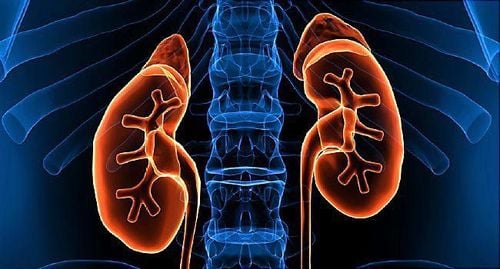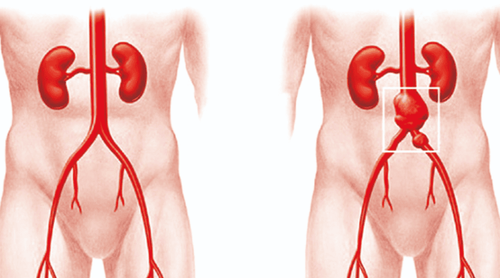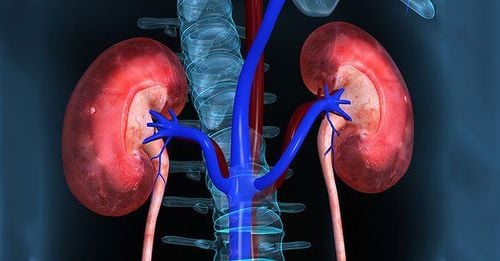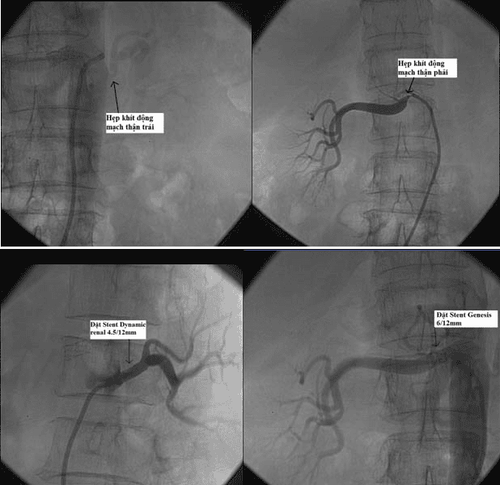This is an automatically translated article.
Renal artery has a very important role, helping to supply blood for kidney activities. Renal artery diseases affect the functioning and function of the renal arteries, seriously threatening the patient's health.
1. Overview of renal artery disease
Renal artery originates from the abdominal aorta at the level of 1-2 dorsal vertebrae, plays an important role, helping to supply blood to the activities of the kidneys. Renal artery disease affects the functioning and function of the renal arteries. These conditions may be congenital lesions or arise secondary to another disorder.
According to the cause, renal artery diseases are divided into:
Congenital renal artery diseases: congenital renal artery atrophy, renal artery aneurysm, renal prolapse and prolapse, renal arteriovenous shunting ,... Secondary renal artery diseases: renal atherosclerosis, renal artery occlusion, fibromuscular dysplasia of renal artery, Takayasu's disease,... According to disease progression, renal artery disease is divided into Acute renal artery disease: malignant renal vascular fibrosis, thrombotic microangiopathy, macroscopic nodular arteritis, acute scleroderma attack Chronic renal artery disease: renal artery stenosis, fibrosis Benign renal vasculature, antiphospholipid syndrome.
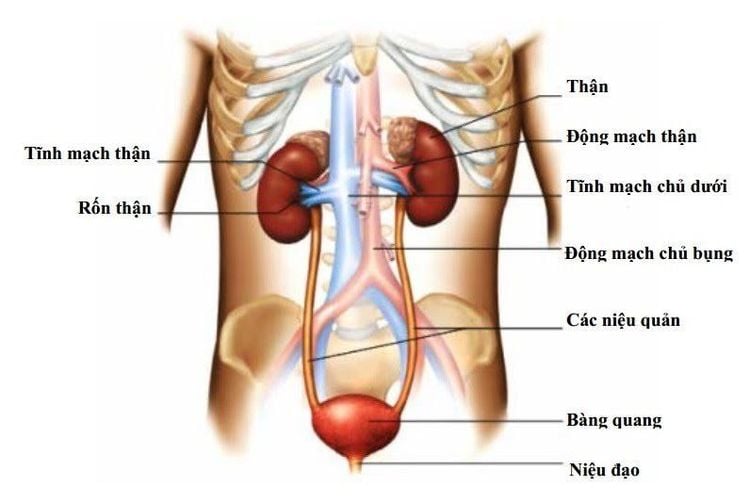
Vị trí động mạch thận
2. Common diseases of the renal artery
2.1 Renal artery stenosis Renal artery stenosis is narrowing of one or both renal arteries. In the elderly, the cause of renal artery stenosis is usually atherosclerosis. Atherosclerotic plaque is made up of cholesterol, fat, calcium and other substances that accumulate on the artery walls, making the arteries hard and narrow. In young adults, narrowing of the arteries is often caused by fibromuscular dysplasia syndrome. This is a syndrome that causes the muscle in the renal artery to develop abnormally, the renal artery will have narrow sections and bulging segments.
Most patients with renal artery stenosis have no obvious symptoms until the disease has progressed to a severe degree. The disease is often discovered incidentally when the patient is performing laboratory techniques to examine the kidneys for another disease. Symptoms that may be caused by renal artery stenosis include: sudden increase in blood pressure, decreased kidney function with antihypertensive treatment, hypertension before age 30 or after age 55, proteinuria level high, heart failure,...
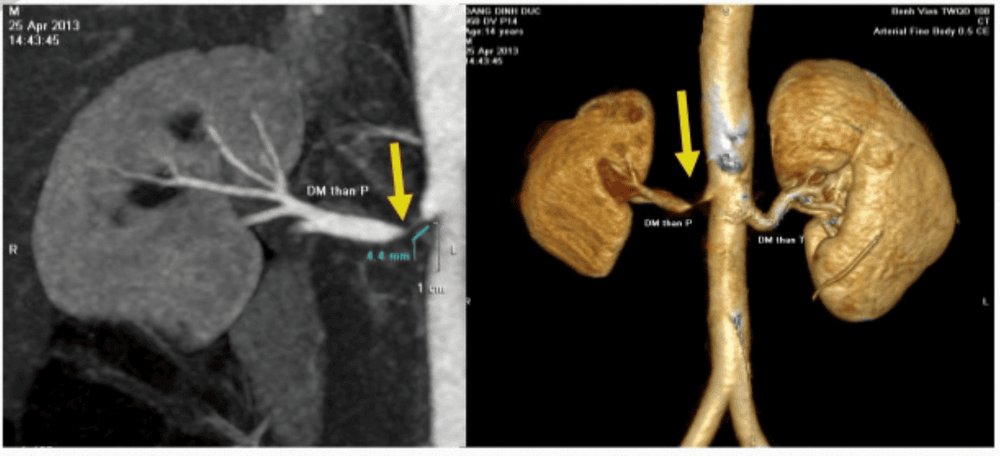
Hình ảnh hẹp động mạch thận bên phải
Patients with renal artery stenosis will be at risk of complications due to impaired kidney function, atherosclerosis in the renal arteries will also cause risks such as atherosclerosis in other blood vessels such as blockage. peripheral vascular disease, cerebral stroke, myocardial infarction,...
Renal artery stenosis is treated by lifestyle changes, increased exercise, healthy food choices, and quitting alcohol. cigarette. Combined use of drugs to treat blood pressure, reduce blood lipids, antiplatelet drugs. Angioplasty can be used to improve blood flow.
2.2 Renal artery aneurysm Renal artery aneurysm is an irreversible dilatation of the renal artery wall with a diameter greater than 50% of the normal diameter. There are many causes of aneurysms such as:
Due to degenerative lesions such as arteriosclerosis, fibrous dysplasia,... Due to mechanical mechanisms: post-traumatic renal artery aneurysm, aneurysm aneurysm Renal vessels after vascular bypass surgery, artificial artery transplantation,... Due to the inflammatory process: aneurysms can be caused by syphilis bacteria, common bacteria, viruses,... Aneurysms Renal vessels as well as aneurysms in general, if untreated, always tend to enlarge and can lead to complications such as: compression of surrounding organs, infection, rupture of aneurysms,... With renal artery aneurysm, rupture of aneurysm into the abdomen or behind the peritoneal cavity is the most dangerous complication, the patient will have massive bleeding, a high risk of death. Even with timely surgery, the mortality rate is still up to 30-70%.
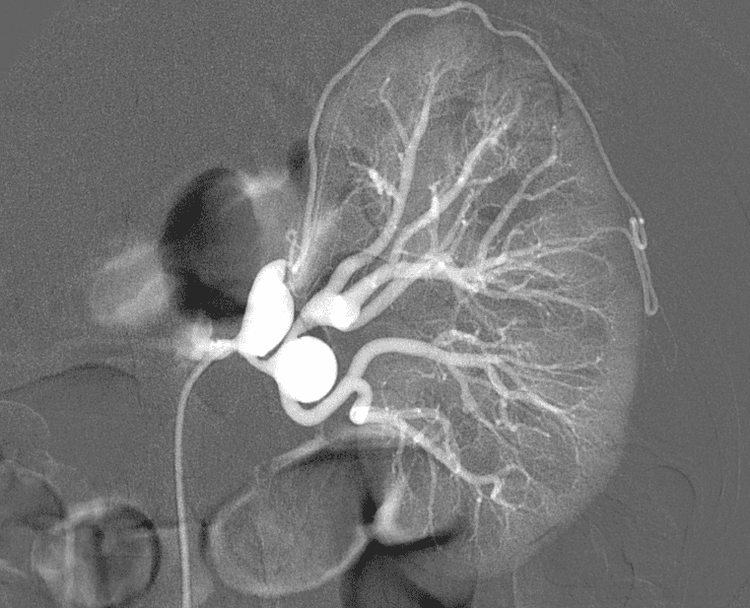
Hình ảnh chụp mạch bệnh nhân bị phình động mạch thận
Patients with renal aneurysm should be closely monitored, when the size of the aneurysm enlarges, it must be monitored more closely. Renal artery aneurysm will be indicated for surgery when:
Aneurysms 5 cm in diameter or increased by more than 0.5 cm/year Renal artery aneurysms have clinical manifestations Sacral artery aneurysms because of the high risk of superinfection and broke suddenly. 2.3 Renal Vascular Fibrosis Renal vascular fibrosis is a term used to refer to renal vascular damage caused by hypertension. The disease is divided into two types, benign and malignant. In which, benign renal vascular fibrosis occurs in patients with long-term hypertension but does not progress to malignant hypertension. Malignant renal vascular fibrosis is caused by malignant hypertension, the patient's blood pressure is suddenly very high, accompanied by acute symptoms in the fundus, brain, heart, acute kidney failure, aneurysm dissection owner.
In benign renal vascular fibrosis, the patient's kidney is reduced in size, on the surface of the kidney there are many smooth lines like the image of lumpy skin, thin renal cortex. The cause of the disease is because the arterioles are deposited with hyaline, thickening, narrowing the lumen, causing lack of blood to the kidneys. In the later stages of the disease, the glomerular vasculature is also obstructed by hyaline deposition. Lack of blood supply to the kidney causes the renal tubules to atrophy, the interstitial tissue becomes fibrotic and may absorb inflammatory cells. Benign renal vascular fibrosis rarely leads to renal failure. Benign renal vascular fibrosis has no specific treatment, patients need to be treated for hypertension according to a combination regimen of many drugs, including ACE inhibitors to enhance kidney protection. In addition, patients need correction for cardiovascular risk factors.
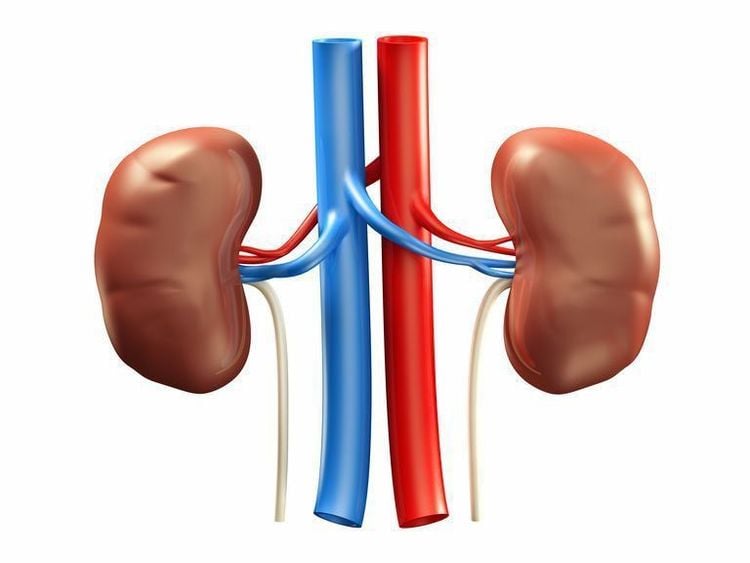
Xơ hóa mạch máu thận gặp trên bệnh nhân tăng huyết áp
Malignant renal vascular fibrosis, the patient's kidney size is normal or only slightly smaller, on the surface of the kidney there are red speckled hemorrhagic spots. Caused by arterioles with fibrinoid deposition and infiltration of acute inflammatory cells, causing necrosis of the vessel wall. There may be thrombus in the glomerular lumen or in the necrotic arterioles. Clinically, the patient has symptoms of dizziness, headache, nausea and vomiting, blurred vision, hematuria and proteinuria, the patient may die due to increased blood urea, cerebral hemorrhage or heart failure. Treatment of malignant renal vascular fibrosis is an emergency treatment, which should be done quickly and urgently. Patients need to be controlled blood pressure with intravenous antihypertensive drugs, after the blood pressure stabilized can be given oral ACE inhibitors. The blood volume is strictly controlled, if the blood volume is reduced, the patient will be quickly adjusted with physiological saline solution. Administer dialysis if necessary.
2.4 Renal Atherosclerosis Renal atherosclerosis is common in patients after 45 years of age, this is the most common cause of hypertension due to renal vascular disease. Atherosclerotic stenosis of the renal artery usually occurs in the first third of the renal artery. Renal atherosclerosis and atherosclerosis in general are of a gradual nature, occurring in a long time, the disease appears insidiously but is very dangerous. 50% of cases of renal artery atherosclerosis will lead to renal artery stenosis, of which about 20% are complete renal artery occlusion, seriously affecting renal function. If atherosclerotic plaques fall off with the blood flow to the coronary arteries, they block the blood vessels, causing stroke, cerebral palsy, myocardial infarction, etc., threatening the patient's life.

Hẹp động mạch thận do xơ vữa
Patients with renal atherosclerosis need to have a reasonable diet and physical exercise, limit the intake of animal fat, animal organs, eggs, do not smoke, limit alcohol,... Re-examination periodically, follow the treatment as directed by the doctor.
For detailed advice on the disease as well as renal artery intervention methods, please come directly to Vinmec Health System or register for an online examination HERE.
MORE:
How does renal artery intervention take place? High blood pressure due to renal artery stenosis Should intervention to treat renal artery stenosis?




